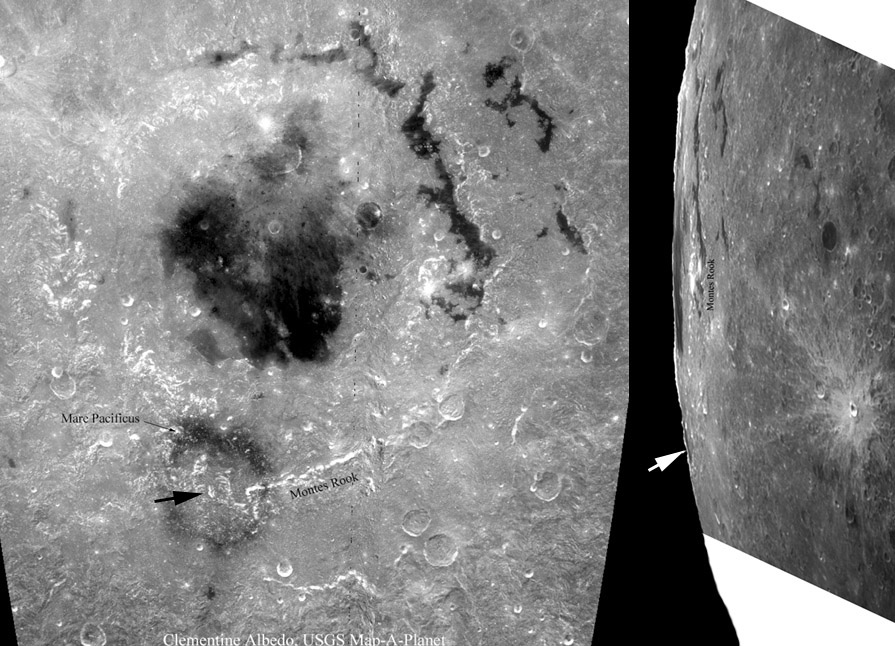January 3, 2018
Mare Pacificus
Originally published July 6, 2008

left image from Clementine - Map-A-Planet, right by Howard Eskildsen, Ocala, Florida; the white arrow points to the northern portion of Mare Pacificus on Howard's image, and the black arrow identifies the eruption vent.
Mare Pacificus? Another unofficial name with a convoluted history, but more interesting as a unique type of lunar eruption. As shown on the high Sun Clementine mosaic there is a dark ring on the southern part of the Cordillera Rim of the Orientale Basin. The diameter of this ring is about 155 km and right at its center is an elongated bright-rimmed depression. The dark material is pyroclastic - volcanic ash - which Jim Head, Lionel Wilson and Cathy Weitz interpreted as the result of a single eruption. If there had been multiple eruptions there probably would have been a range of ejection angles, resulting in a more homogenous deposit of ash rather than just one ring. Modelling of explosive volcanism deposits is sophisticated enough that Head and colleagues calculated that the eruption started about 3-4 km below the surface and that ash shot out of the ground at speeds of 350-420 m/s, reaching a height of 38 km. One question - how can a dark ash come from a bright eruption vent? The answer is simple - the ash is dark because of its mineral composition, and the inside of the eruption vent is bright because of downslope movement of soils, exposing relatively fresh basin rim rocks that have not yet been darkened by solar radiation. The center of Mare Pacificus is about 7° beyond the mean limb. Howard's image shows that it is detectable from Earth; it has probably been imaged a number of times, most likely without realizing its remarkable nature.
Chuck Wood
Technical Details
May 25, 2008, 09:55 UDT. Meade 6" f/8 refractor + Orion Starshoot II + 2X Barlow.
Related Links
Rükl plate VII (unlabeled)
Yesterday's LPOD: X-Raying Imbrium
Tomorrow's LPOD: Apollo 17 Stunner
COMMENTS?
Register, Log in, and join in the comments.



